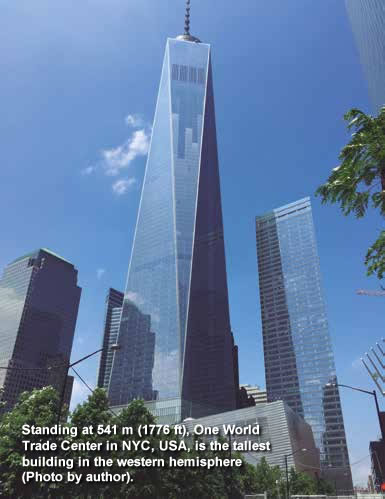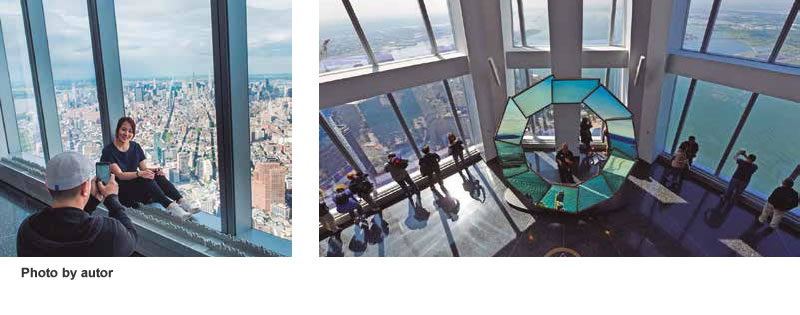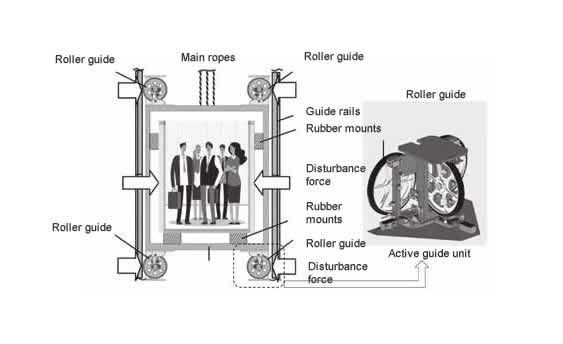
Kheir Al-Kodmany*
This article is part of a larger work that bears the title cited above.
Case Study: One World Trade Center, New York City, NY, USA
Advanced elevator systems have been installed in significant skyscrapers. Examples include Burj Khalifa in Dubai, UAE; One World Trade Center in New York City, USA; and Shanghai Tower in Shanghai, China. The best-case scenario would be to review each of these project examples. Yet, because there is no space to discuss all of them in one article, the author must choose one and elaborate on it. Due to its symbolic significance to the United States, One World Trade Center received more attention throughout its design and construction than any other skyscraper. Thousands of workers, citizens, experts, engineers, and architects assisted in bringing this structure to the cutting edge of technology. In addition, the building’s owners and authorities wished to use it as a model for future construction.
Building Overview
Standing at 541 m (1776 ft) tall, One World Trade Center is the highest building in the Americas (Figure 3). It was built in 2014 and was designed by SOM (Skidmore, Owings and Merrill). It has 104 stories above ground and 2 below. The tower, which serves as the property’s focal point, is located on the 16-acre site where the Twin Towers once stood before the tragic events of September 11, 2001. It integrates cutting-edge environmental and green features, such as advanced elevator systems, and establishes new architectural and safety standards. The upgraded life-safety systems go above and beyond what the New York City Building Code requires. The tower is resistant to explosions, storms, and earthquakes due to using over 50,000 tons (35,714 cubic yards) of steel and 252,000 tons (180,000 cubic yards) of concrete for constructing the tower. Special safety precautions include pressurized and extra-wide emergency stairs, fireproofing, and air-filtration systems for chemical and biological particles. According to the Emporis database, the building is among the most expensive in the world; One World Trade Center had a total cost of USD 3.9 billion].
Elevator Systems
Five of the One WTC’s 73 elevators are express, with a top speed of more than 36.5 kph [10.16 m/s (33.3 ft/s)]. These express elevators are the quickest in the Western Hemisphere and can carry 1814 kg (4000 lb). As a result, it takes around 40 s to go the 394 m (1293 ft) leading to the observation deck, which is on the 102nd floor. Elevator speed was increased from 9.1 to 10.16 m/s to accommodate the expected large number of guests visiting the observation deck at One World Trade Center. The design team anticipated 10,000 people working daily on the office floors and over 5 million visitors per year (14,000 per day) to the observation deck].
Eight 2.3-ton electric motors were placed on the roof of One WTC to power the fast elevators. Each elevator is controlled by a pulley-like device that consists of a cab and counterweights connected by a cable. Tenants use an express shuttle to get to the sky lobby on the 64th level, where “local” elevators that travel to higher levels are located. Almost every component of the elevator systems, including the high-speed double-deck elevators, computerized roller guides, air pressure differential systems, destination dispatching systems, and entertaining electronic displays, use cutting-edge technology.
Computerized Roller Guides
It takes more than powerful motors to transport an elevator across long distances swiftly. Like bullet trains, elevators that operate at high speeds require exceptionally smooth tracks and rail junctions. Due to alignment precision requirements, the vertical placement of elevator rails limits their length to about 4.9 m (16 ft), meaning that every elevator path will require a lot of rail joints. The train-rail segments in One WTC have been elongated to decrease the number of joints the cars must pass, making the rides more comfortable for passengers.
Since skyscrapers swing slightly day and night due to temperature changes (contraction and expansion), wind forces, and other factors, elevators must account for these minute variations in the spacing between guide rails. ThyssenKrupp designed the One WTC’s automatic roller guides to deal with these problems. Innovative roller guides apply pressure in the opposite direction of motion, dampening the impact of irregularities. The elevator’s wheels stay in touch with the rails due to the roller guides moving up and down with the car. The polyurethane rollers at One WTC can endure minor defects in the rail connections. A device that exerts a force against the rails also controls them, reducing the likelihood of tremors and rattling due to alignment issues or other defects. These dynamic roller guide systems, also known as real-time shock absorbers, are intelligent. They act like a driver who has seen a large pothole in the road and swerved slightly to avoid it. If a pothole is on the right side of the road, the driver will make a slight left turn to avoid it, and vice versa. This means that the express elevators are not only fast (25% faster than the express elevators that served the original World Trade Center Twin Towers) but also comfortable for passengers, as there is no shaking or rattling.
—
To be continue





